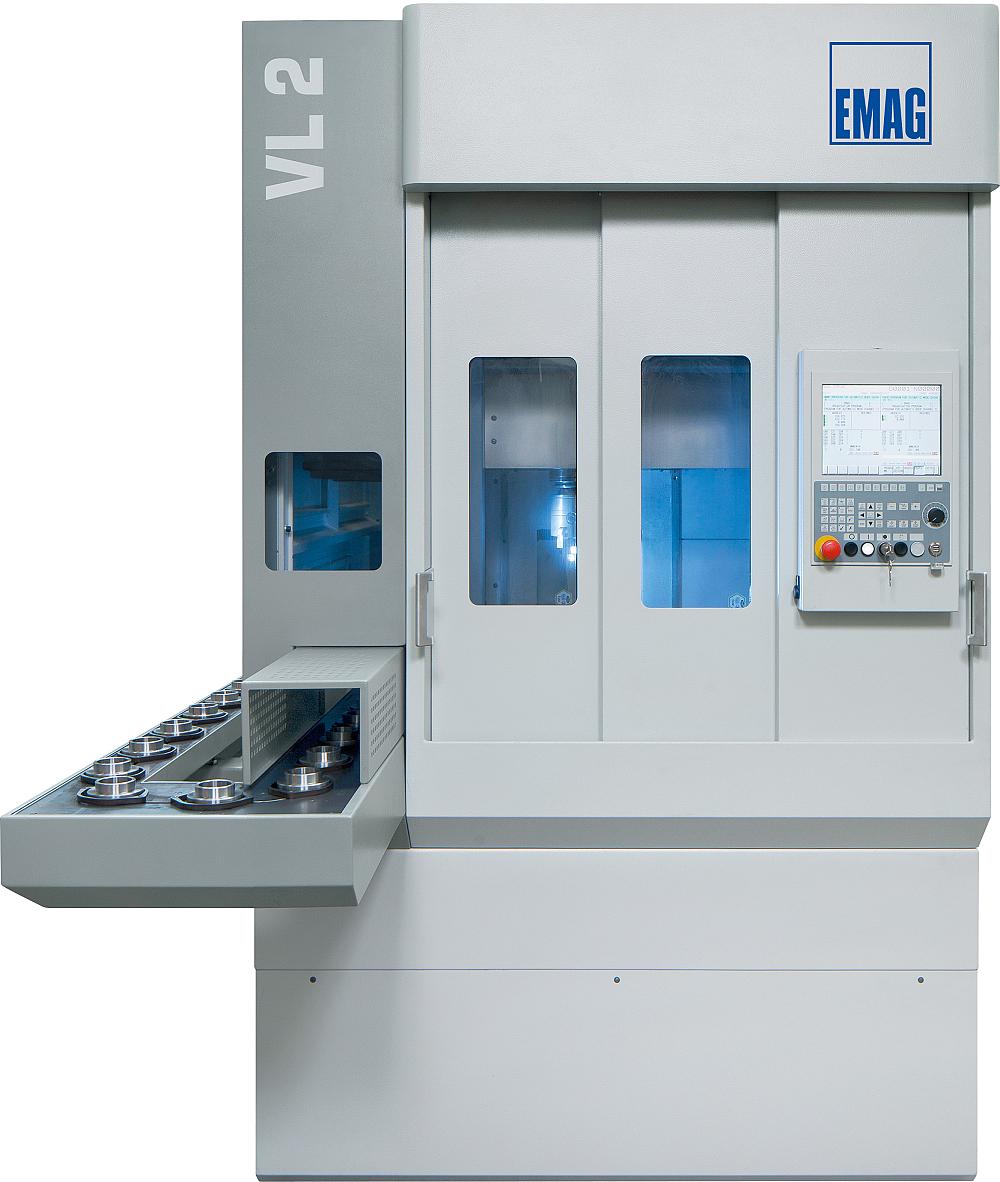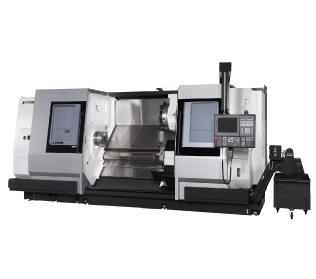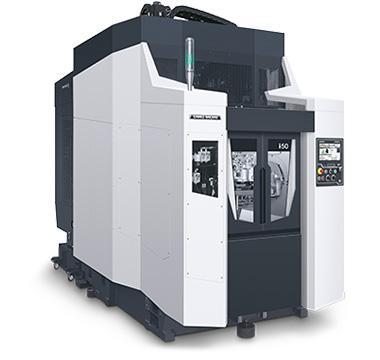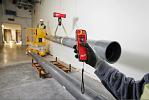- FMA
- The Fabricator
- FABTECH
- Canadian Metalworking
Built for Speed
Machine tools for high-volume production with a focus on automotive parts.
- By Nate Hendley
- July 27, 2015
- Article
- Metalworking
Mass production machining requires machine tools capable of high speed, high volume, repeatability and lights-out operation. It helps if the machine tools are relatively compact (to fit as large a number of them as possible into one spot) and easy to link together to create a true mass production environment.
Here’s a look at what’s new and/or noteworthy in mass production machining, with a special focus on producing volumes of automotive parts:
Makino
The nx-series of horizontal machining centers from Makino are “a staple in the automotive manufacturing market, and are currently being applied by OEMs and tier suppliers alike,” says Mark Rentschler, Makino marketing director in Mason, Ohio.
“The a51nx and a61nx offer 400 mm and 500 mm work zones respectively. Both platforms come standard with a 14,000-rpm high-speed, high-power spindle featuring 240 Nm of torque. However, what makes these machines so successful in the automotive market isn’t just their specifications, but their productivity and long-standing durability and reliability,” explains Rentschler.
Automotive manufacturers have to meet tight deadlines while machining to exacting specifications under intense pressure. Challenges include unreliable processes and unexpected downtime.
“As such, [auto manufacturers] need machines and processes that are stable enough to handle punishing 24/7 production schedules [while offering] repeatable performance and maximum uptime … from the stand-point of machining centers, we’ve designed and manufactured our nx-series machines with productivity and reliability as fundamental attributes.
“With extra-rigid base castings and sophisticated thermal management of key machine components, these machining centers provide sustained dynamic accuracy and repeatability that reduce and eliminate rework and scrapped parts. Design elements such as one-piece way covers, enable these machines to withstand even the harshest automotive production environments with minimal maintenance required,” continues Rentschler.
Of course, the best machine tools in the world won’t offer premium results unless properly used. To this end, Rentschler says Makino Engineering Services personnel, “have an unmatched history of creating robust production-ready processes—including machinery, fixtures, tools, programs and documentation—for parts with complex geometries, demanding deadlines, challenging budget constraints and Six Sigma standards,” he states.
Asked to cite the optimal conditions for high production auto part machining, Rentschler says, “It all comes down to robust, reliable machinery and experienced engineering support. When mass producing auto parts, you can’t just have one or the other. When you combine these factors, auto manufacturers can have confidence in their ability to quote and win new business.”
EMAG
The VL series of vertical pickup lathes from EMAG can be used “for any sector which has high production parts,” says Jeff Moore, regional sales manager for EMAG in Canada, which of course includes automotive.
The VL 2, VL 4, VL 6 and VL 8 are designed for, respectively, components 100 mm, 200 mm, 300 mm and 400 mm in diameter. VL series lathes are modular in design and capable of medium and large batch runs. These lathes have a small footprint, which means reduced floor costs and machine layout flexibility. The VL 2 was released in 2013 while the VL 4, VL 6 and VL 8 were introduced last year.
“Every VL machine features an integrated O-automation for transporting workpieces on its left-hand side (conveyor options are available in the VL flexible modular design to meet the needs of each customer). Combined with self-loading pick-up spindles, this ensures short cycle times and high productivity…multiple parts [can be loaded automatically or by an operator] onto the O-loop conveyor for machining,” says Moore.
The VL series represents “a different way of thinking because it’s not a standard horizontal lathe…this is a vertical pick-up machine which can be easily integrated without need of external automation such as a robot…the machine is based around a cast Mineralit polymer [concrete] body…this gives us thermal stability as well as vibration dampening—six to eight times more vibration dampening characteristics than a standard, traditional cast-iron [body],” he continues.
Moore also praises the VL lathe’s high productivity rates. “Right now, when up against standard cast iron horizontal machines, we’re typically 30 to 40 per cent faster in our feed rate.”
Maintenance and servicing areas on the VL series lathes are easily accessible from the rear, and the machines can run in lights-out fashion. Compact design means VL series lathes can be bunched together and linked for mass production in a relatively small space.
“We can integrate operations…you can join machines together…[the VL series is] very easily integrated into a manufacturing line,” says Moore.
Okuma
Okuma has enjoyed a decades-long association with automotive manufacturers. The company states that automotive manufacturers have used its machine tools for over 40 years to “produce a wide variety of parts from die-molds to drive trains, pistons, camshafts, turbo chargers and aluminum wheels.”
Okuma machines are prized for being productive and offer maximum uptime on high-volume runs. The company’s LU series of horizontal lathes are particularly attractive to auto manufacturers, states Okuma. The company’s LU35II and LU45II CNC turning centers both have 22 tool stations, two independent saddles, four power ranges, large hardened box guide ways, a live quill tailstock and THINC-OSP CNC control system.
Both turning centers also feature an optional M (milling) function that offers mill/drill operations in the upper turret.
In addition , Okuma offers vertical lathes, double column machining centers and grinders for use in automotive manufacturing.
“Okuma [machine tools] also employ an Intelligent Technology called Thermo-Friendly Concept, which automatically compensates for ambient temperature and heat generated during machining so that high accuracy can be achieved without interventions from the CNC machine tool operator. The result is increased accuracy, decreased costs and maximized profitability,” explains Okuma.
DMG Mori Seiki
The i 50 high-speed horizontal machining center from DMG Mori Seiki was put together with the mass production machining of very specific vehicle parts in mind.
“This is a special machine. It’s mainly designed [to make] cylinder heads for automotive. It’s not like a general purpose machine for automotive,” states Siroos Askari, engineering manager for Mori Seiki products at DMG Mori Seiki Ellison Canada, Mississauga, ON.
With the addition of the i 50, DMG Mori Seiki “now offers a full lineup of models designed for machining the five major automotive engine components called 5C,” says the company. The 5C’s are cylinder heads, cylinder blocks, cam shafts, crank shafts and connecting rods.
“[The i 50] can be used for other things [besides cylinder heads] but it cannot replace a standard horizontal machining center,” adds Askari.
The i 50 has a compact body (the machine is 1,680 mm wide) which means manufacturers can link a clutch of these HMCs together in a small space for mass producing parts. High speed machining is possible thanks to a spindle that moves on the X, Y, Z axes and lightweight moving parts on the Z-axis. The HMC can achieve a speedy rapid traverse rate of 62 m/min on all axes and a maximum acceleration of 0.7 G on the X and Y axes. A top acceleration of 1.0 G can be attained on the Z-axis, on which a drilling or tapping cycle is repeatedly performed.
Hydromat
ICON Technologies, a division of St. Louis, Missouri-based Hydromat, unveiled the ICON 6-150 mill/turn machining center at IMTS 2014.
Among other features, the 6-150 has a six position table and four machining modules, each equipped with a cartridge style motor spindle. High torque spindles are available in 10,000 rpm, 20,000 rpm, 42,000 rpm and 60,000 rpm. Spindles are air purged, liquid cooled and permanently grease-lubricated, making them maintenance free, says Hydromat.
The 6-150 can be fitted with a fifth axis machining unit that boasts a high-speed, integrated, direct-drive motor spindle. Equipped with the optional fifth axis, the 6-150 is “perfect for medical applications and the production of aerospace, hydraulic, automotive and other precision machined parts,” states Hydromat.
Multi-station transfer technology means simultaneous machining on all four stations is possible, which makes the 6-150 a good choice for medium to high production of complex work pieces requiring multiple operations and intricate cuts.
Mazak
Mazak showed off its auto-part making prowess at the 2014 SEMA automotive specialty products trade show in Las Vegas last November. During the show, Mazak used the Vertical Center Universal (VCU) 400A 5X, Vertical Center Universal (VCU) 500A and Quick Turn Smart (QTS) 200M machines
to cut automotive parts for the benefit of conference goers.
The VCU 400A 5X machining center has a five-axis rotary/tilt trunnion table with durable, high-speed roller gear cam technology and can mass produce small complex parts up to 15.74 inches in diameter and 12 inches high.
The VCU 500A has a three-axis table and can process basic part geometries up to 19.68 inches wide by 19.68 inches deep by 12 inches tall. As with the VCU 400 series, the VCU 500A’s standard 10,000 rpm CAT 40 spindle is also available in versions that can hit 12,000 and 20,000 rpm.
The QTS 200M turning center offers high performance for small to medium-sized parts. As an “M” configuration, the machine adds milling, drilling and tapping abilities to its turning capability. This gives the machine multi-tasking abilities for even shorter part processing times. The QTM 200M has a 25 hp spindle capable of 6,000 rpm.
About the Author
subscribe now


Keep up to date with the latest news, events, and technology for all things metal from our pair of monthly magazines written specifically for Canadian manufacturers!
Start Your Free Subscription- Industry Events
MME Winnipeg
- April 30, 2024
- Winnipeg, ON Canada
CTMA Economic Uncertainty: Helping You Navigate Windsor Seminar
- April 30, 2024
- Windsor, ON Canada
CTMA Economic Uncertainty: Helping You Navigate Kitchener Seminar
- May 2, 2024
- Kitchener, ON Canada
Automate 2024
- May 6 - 9, 2024
- Chicago, IL
ANCA Open House
- May 7 - 8, 2024
- Wixom, MI


























